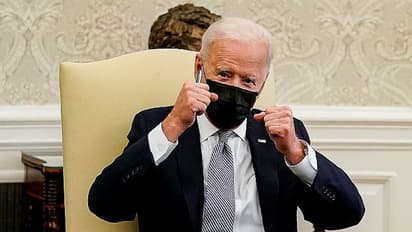10 key global threat predictions by US intelligence community

Synopsis
According to the Annual Threat Assessment report, crises between India and Pakistan is likely to become more intense and that under PM Narendra Modi India will more likely than in the past to respond with military force to Pakistani provocations.
The Office of the Director of National Intelligence in its Annual Threat Assessment report to the United States Congress has made some insightful observations.
According to the Annual Threat Assessment report, crises between India and Pakistan is likely to become more intense and that under PM Narendra Modi India will more likely than in the past to respond with military force to Pakistani provocations.
Let's take a look at 10 key assessments in the ODNI report:
Assessment 1: China seeks to use coordinated, whole-of-government tools to demonstrate its growing strength and compel regional neighbours to acquiesce to Beijing's preferences, including its claims over disputed territory and assertions of sovereignty over Taiwan.
Assessment 2: China-India border tensions remain high, despite some force pullbacks this year.
Assessment 3: Inter-State conflicts are likely to flare up in the next year -- for example, between India and China, which could range from border clashes to sustained violent confrontations.
Assessment 4: Although an India-Pakistan war is unlikely, crises between the two are likely to become more intense, risking an escalatory cycle.
Assessment 5: Under Prime Minister Narendra Modi's leadership, India is more likely than in the past to respond with military force to perceived or real Pakistani provocations. Heightened tensions increase the risk of conflict between the two nuclear-armed neighbours, with violent unrest in Kashmir or a terrorist attack in India being potential flashpoints.
Assessment 6: China will continue to pursue its goals of becoming a great power, securing what it perceives as its territory, and establishing its preeminence in regional affairs by building a world-class military, potentially destabilizing international norms and relationships.
Assessment 7: China is building an increasingly capable nuclear missile force that is more survivable and diverse and on higher alert than before. This includes nuclear missile systems designed to manage regional escalation and ensure an intercontinental second-strike capability.
Assessment 8: Moscow will employ a range of tools like influence intelligence and counterterrorism relations, defence aid and joint exercises, mercenary operations, assassinations, and arms sales to advance its interests or undermine the US interests and that of its allies.
Assessment 9: Russia will remain the most capable WMD rival to the US as it modernizes its nuclear weapons potential and enhances strategic and non-strategic weapons.
Assessment 10: The Middle East will be characterized by pervasive conflicts, with active insurgencies in several countries, friction between Iran and other countries, and persistent terrorism. Domestic volatility, highlighted by popular discontent and socioeconomic grievances, continue to rise, especially as the region tackles the economic fallout from the COVID-19 pandemic and its leaders struggle to meet public expectations for political and economic reform. As a result, some states are likely to experience destabilizing conditions that may push them close to collapse.
Check the Breaking News Today and Latest News from across India and around the world. Stay updated with the latest World News and global developments from politics to economy and current affairs. Get in-depth coverage of China News, Europe News, Pakistan News, and South Asia News, along with top headlines from the UK and US. Follow expert analysis, international trends, and breaking updates from around the globe. Download the Asianet News Official App from the Android Play Store and iPhone App Store for accurate and timely news updates anytime, anywhere.